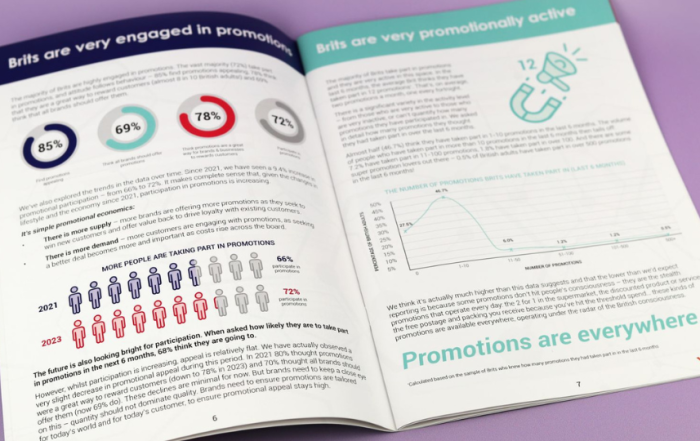Generation Alpha defines individuals born from 2010 onwards and are often described as the most technologically immersed and globally connected demographic in history. This generation is characterised by its seamless integration of technology into daily life, digital fluency from a young age, and a unique set of behaviours and preferences that distinguish them from previous generations. In a recent IPM Webinar, experts Alexandra Haider, Content Editor at Pion, and Liam Bircham, Director of Social at N2O, provided valuable insights into the unique behaviours and preferences of Generation Alpha. Building on these discussions, this article delves deeper into the comparison between Gen Z and Gen Alpha, exploring their distinct approaches to brand engagement and social media usage.


Generation Alpha defines individuals born from 2010 onwards and are often described as the most technologically immersed and globally connected demographic in history. This generation is characterised by its seamless integration of technology into daily life, digital fluency from a young age, and a unique set of behaviours and preferences that distinguish them from previous generations. In a recent IPM Webinar, experts Alexandra Haider, Content Editor at Pion, and Liam Bircham, Director of Social at N2O, provided valuable insights into the unique behaviours and preferences of Generation Alpha. Building on these discussions, this article delves deeper into the comparison between Gen Z and Gen Alpha, exploring their distinct approaches to brand engagement and social media usage.

Generation Z includes anyone born between 1995 and 2009, with Generation Alpha (born in 2010 to now) following close on their heels. Although they are similar in certain behaviours, there are noticeable differences, too – especially regarding how the older Gen As (12-14) consume social media and branded content.
What do they value?
It’s a known fact that Gen Z consumers grew up with the boom of social media. With the ability to globally connect with friends and strangers alike, people shared every aspect of their lives online, and Gen Z was no exception. This has lessened with Gen A. Instead, they focus on the hype surrounding a brand online. If their peers or influencers swear by it, they want it.
Generation Z includes anyone born between 1995 and 2009, with Generation Alpha (born in 2010 to now) following close on their heels. Although they are similar in certain behaviours, there are noticeable differences, too – especially regarding how the older Gen As (12-14) consume social media and branded content.
What do they value?
It’s a known fact that Gen Z consumers grew up with the boom of social media. With the ability to globally connect with friends and strangers alike, people shared every aspect of their lives online, and Gen Z was no exception. This has lessened with Gen A. Instead, they focus on the hype surrounding a brand online. If their peers or influencers swear by it, they want it.
“Gen A focuses on the hype surrounding a brand online. If their peers or influencers swear by it, they want it.”
Take the beauty brand Drunk Elephant, for example. Its global sales went through the roof thanks to the intoxicating power of influencer marketing on TikTok. With numerous content creators pushing the products to followers and its eye-catching pastel packaging, Drunk Elephant suddenly attracted a new audience of younger consumers – Gen Alphas. Gen Z had a lot to say about it, arguing that many of the products’ ingredients aren’t necessary for the Alphas to use yet and could potentially be harmful to their skin at this age. But it didn’t stop the Alphas from rushing to buy from the brand.

How do they discover brands?
While Gen Z turns to platforms like Instagram and TikTok to discover new brands, over half of Alphas first find brands on YouTube. And while Gen Zs will trust their favourite influencers’ product endorsements, Gen As are using social media to educate themselves on brands and product ingredients. They use these platforms for pre-purchase research – and they do so thoroughly.
Influencing Gen A on Social Media
Following in the footsteps of the revered Gen Z influencers, there has been a rise in creator culture among Alphas. Brands must focus on informing Gen Alphas to ensure they align with their content and brand values when collaborating.
Growing up in a world where becoming a celebrity by simply sharing your life on social media appears effortless, it’s not surprising that a large cohort of Gen A wants to be famous. They see it as an easy route to forge a career and make money. However, they’re choosier than Gen Z about what they’ll promote. Gen Z was integral to the prosperity of influencer marketing and, for a while, would advertise pretty much anything if they were getting paid.
“A large cohort of Gen A wants to be famous.”
Gen Alpha is the first fully digital-native generation, so getting online is part and parcel of their daily routines. They’re way more honest online than Gen Z because they don’t care! If brands can ingratiate themselves with Alphas, they open the door for extremely candid product reviews. Brands can learn from Alphas as much as Alphas need to learn from us.
Gen A & Brand Loyalty?
With Gen A’s never-ending pursuit of the latest trends, they’re not yet loyal to brands. As quickly as they love a product, they’ll drop it for the next hot thing. So, brands that become hyper-focused on marketing exclusively to Gen A may succeed for a moment but may not stand the test of time. What Gen Alpha does brilliantly is that it can make a product go viral overnight. Conversely, Gen Z is the generation that will keep a brand going.
So, it’s a savvy strategy to tap into Gen Alpha for new product launches and build buzz around the brand. To ensure the products’ longevity, Gen Z are the ones that will stick with the brands they know and love, which in turn can influence the loyalty of their younger counterparts.
This is why brands should concentrate on finding ways to build brand loyalty with Alphas. There’s an opportunity to positively influence their brand and product preferences with ethical messaging, helping them as they mature and gain a deeper understanding of the world. Guiding Gen A on fast fashion and consumerism will help to shape their ideas. Although pumping out new products to boost sales may work in the short term, it’s a tiresome battle to keep Alphas engaged. Instead, getting them involved with product development, long-term social collaborations and innovations will appeal to their creative natures and keep them coming back to that brand in the future.
“Getting Gen Alpha involved with product development, long-term social collaborations and innovations will appeal to their creative natures and keep them coming back to that brand in the future.”
Multi-generational marketing
Although there’s a massive amount of attention on Gen Z and Gen Alpha right now, it’s essential not to neglect the Millennials either. They have considerable spending power that the younger generations don’t have yet. Plus, parents of Gen A are predominantly Millennials, so they make the final purchasing decisions for their children. If their parents are brand loyal, Alphas will likely use that brand, too.
Although Millennials are less likely to post on social media, they view and consume content, so they’re still highly influenced by what brands post online. So, steering marketing to appeal to multi-generations is a must.
To connect with Gen Z and Gen Alpha, brands need to use an intelligent approach that includes teaching, product benefits, and ethical considerations tailored to their preferences. By engaging Gen Alpha in product development and building long-lasting relationships, brands can create loyal customers from an early age while keeping Gen Z’s trust and attention, guaranteeing lasting support. It’s essential to market to multiple generations, with Millennials playing a crucial role in purchasing decisions and brand loyalty. If brands successfully navigate these generational differences with thoughtful, inclusive, and adaptable marketing strategies, they can tap into the vast and diverse market these generations represent.
“Gen A focuses on the hype surrounding a brand online. If their peers or influencers swear by it, they want it.”

While Gen Z turns to platforms like Instagram and TikTok to discover new brands, over half of Alphas first find brands on YouTube. And while Gen Zs will trust their favourite influencers’ product endorsements, Gen As are using social media to educate themselves on brands and product ingredients. They use these platforms for pre-purchase research – and they do so thoroughly.
Influencing Gen A on Social Media
Following in the footsteps of the revered Gen Z influencers, there has been a rise in creator culture among Alphas. Brands must focus on informing Gen Alphas to ensure they align with their content and brand values when collaborating.
Growing up in a world where becoming a celebrity by simply sharing your life on social media appears effortless, it’s not surprising that a large cohort of Gen A wants to be famous. They see it as an easy route to forge a career and make money. However, they’re choosier than Gen Z about what they’ll promote. Gen Z was integral to the prosperity of influencer marketing and, for a while, would advertise pretty much anything if they were getting paid.
“A large cohort of Gen A wants to be famous.”
Gen Alpha is the first fully digital-native generation, so getting online is part and parcel of their daily routines. They’re way more honest online than Gen Z because they don’t care! If brands can ingratiate themselves with Alphas, they open the door for extremely candid product reviews. Brands can learn from Alphas as much as Alphas need to learn from us.
Gen A & Brand Loyalty?
With Gen A’s never-ending pursuit of the latest trends, they’re not yet loyal to brands. As quickly as they love a product, they’ll drop it for the next hot thing. So, brands that become hyper-focused on marketing exclusively to Gen A may succeed for a moment but may not stand the test of time. What Gen Alpha does brilliantly is that it can make a product go viral overnight. Conversely, Gen Z is the generation that will keep a brand going.
So, it’s a savvy strategy to tap into Gen Alpha for new product launches and build buzz around the brand. To ensure the products’ longevity, Gen Z are the ones that will stick with the brands they know and love, which in turn can influence the loyalty of their younger counterparts.
This is why brands should concentrate on finding ways to build brand loyalty with Alphas. There’s an opportunity to positively influence their brand and product preferences with ethical messaging, helping them as they mature and gain a deeper understanding of the world. Guiding Gen A on fast fashion and consumerism will help to shape their ideas. Although pumping out new products to boost sales may work in the short term, it’s a tiresome battle to keep Alphas engaged. Instead, getting them involved with product development, long-term social collaborations and innovations will appeal to their creative natures and keep them coming back to that brand in the future.
“Getting Gen Alpha involved with product development, long-term social collaborations and innovations will appeal to their creative natures and keep them coming back to that brand in the future.”
Multi-Generational Marketing
Although there’s a massive amount of attention on Gen Z and Gen Alpha right now, it’s essential not to neglect the Millennials either. They have considerable spending power that the younger generations don’t have yet. Plus, parents of Gen A are predominantly Millennials, so they make the final purchasing decisions for their children. If their parents are brand loyal, Alphas will likely use that brand, too.
Although Millennials are less likely to post on social media, they view and consume content, so they’re still highly influenced by what brands post online. So, steering marketing to appeal to multi-generations is a must.
To connect with Gen Z and Gen Alpha, brands need to use an intelligent approach that includes teaching, product benefits, and ethical considerations tailored to their preferences. By engaging Gen Alpha in product development and building long-lasting relationships, brands can create loyal customers from an early age while keeping Gen Z’s trust and attention, guaranteeing lasting support. It’s essential to market to multiple generations, with Millennials playing a crucial role in purchasing decisions and brand loyalty. If brands successfully navigate these generational differences with thoughtful, inclusive, and adaptable marketing strategies, they can tap into the vast and diverse market these generations represent.
News
HFSS Advertising Regulations: What Marketers Need to Know
HFSS regulations have entered a new phase. This article breaks down what the latest rules mean for marketers, where the key risks sit, and how IPM tools and legal support can help.
Promotions Wrapped! Playing Back the Biggest Trends of 2025
From Superman on The Shard to ‘AI slop’, see what cut through in 2025...
What Do Brits Want from Promotions in 2026
Get ready to unpack the promotional marketing landscape for 2026 as Mando, YouGov and the IPM prepare to launch What Brits Want from Promotions 3.0...






